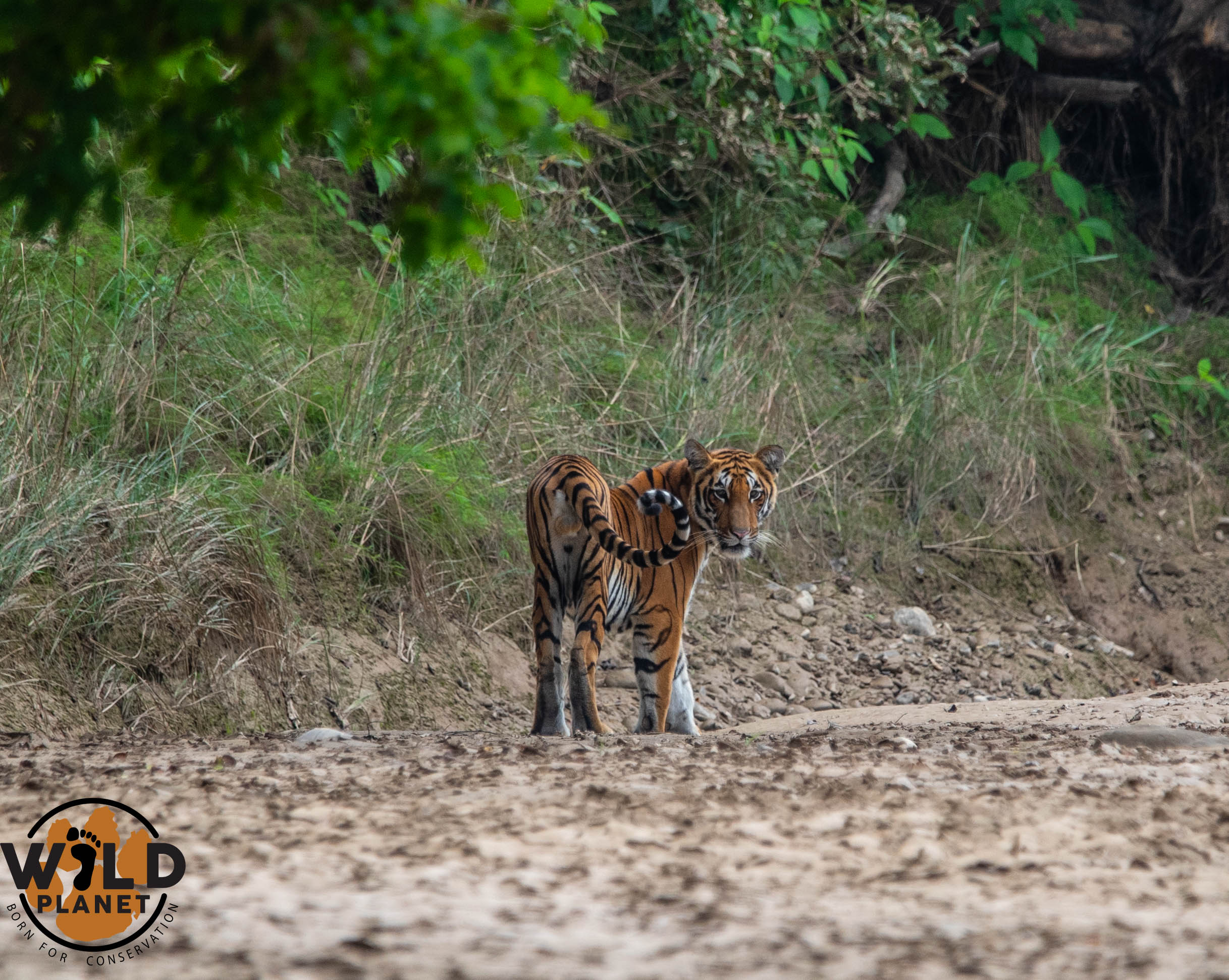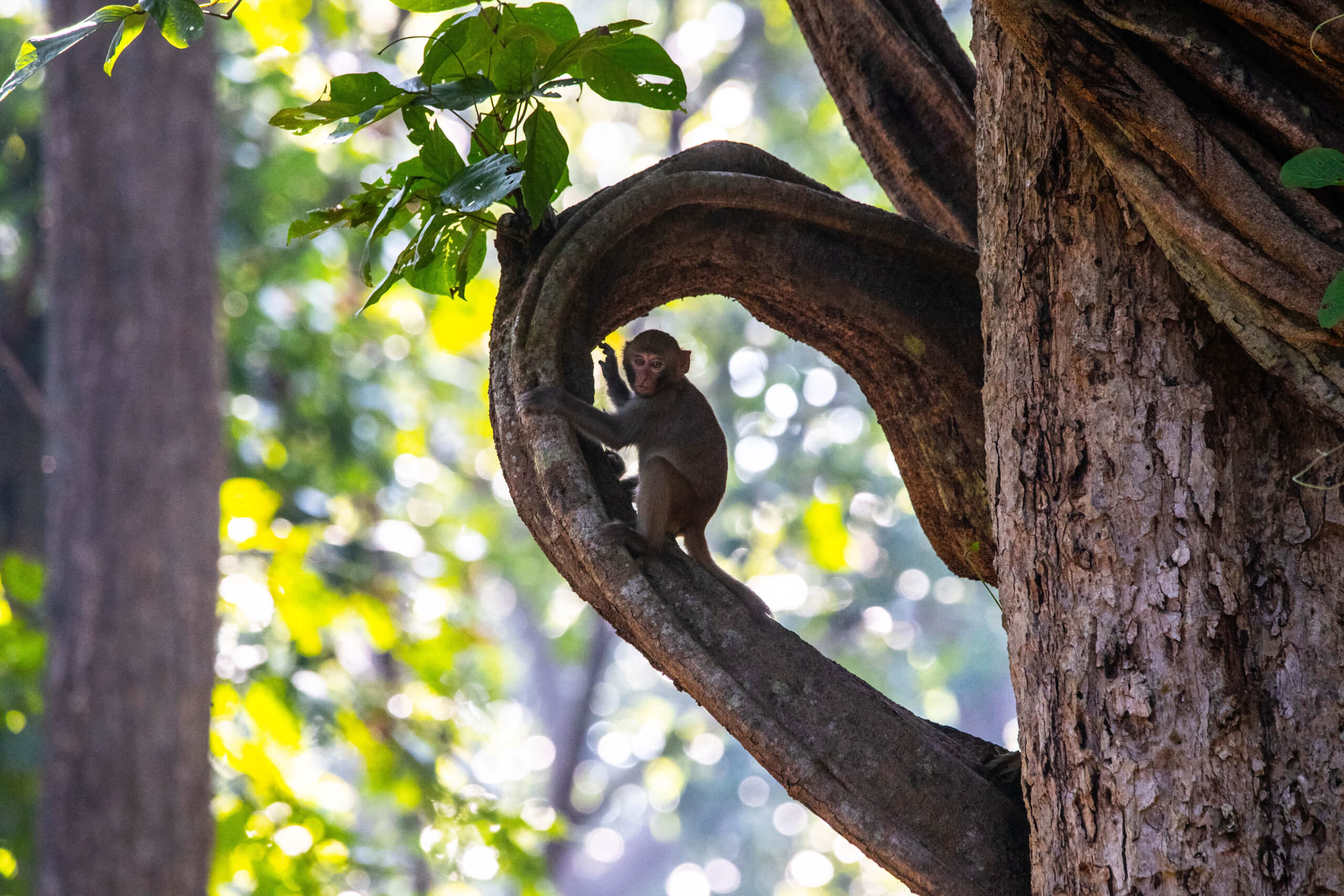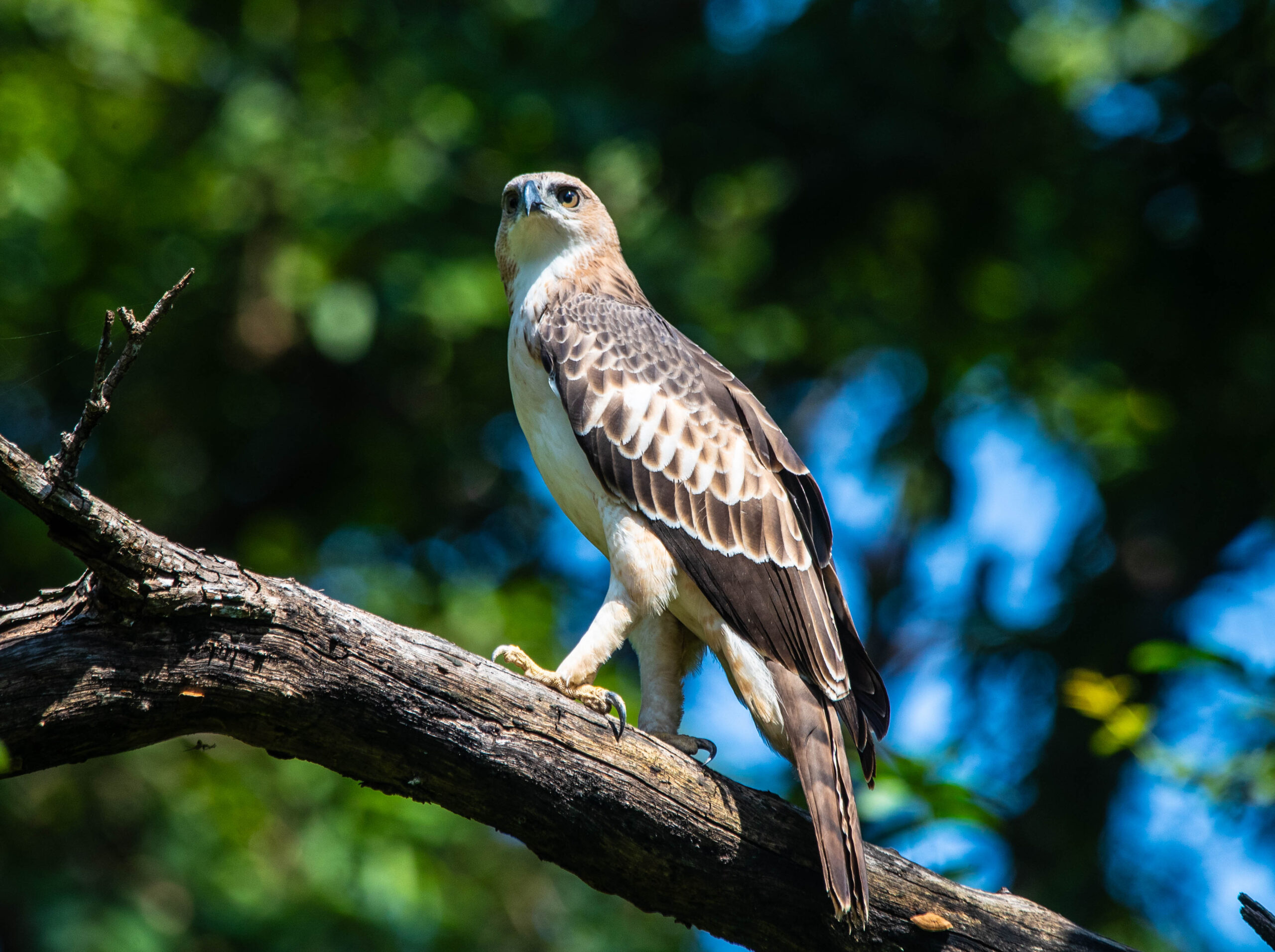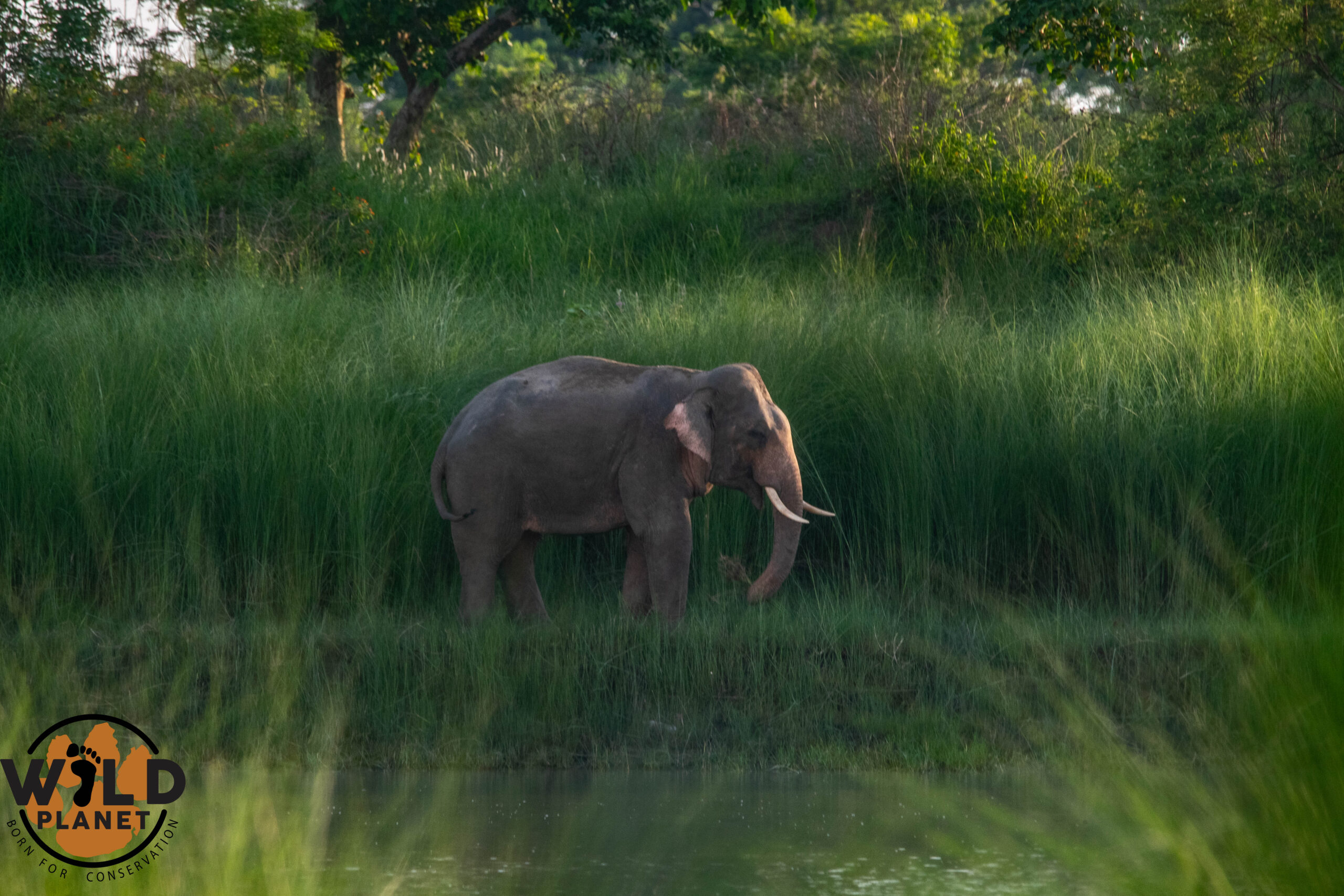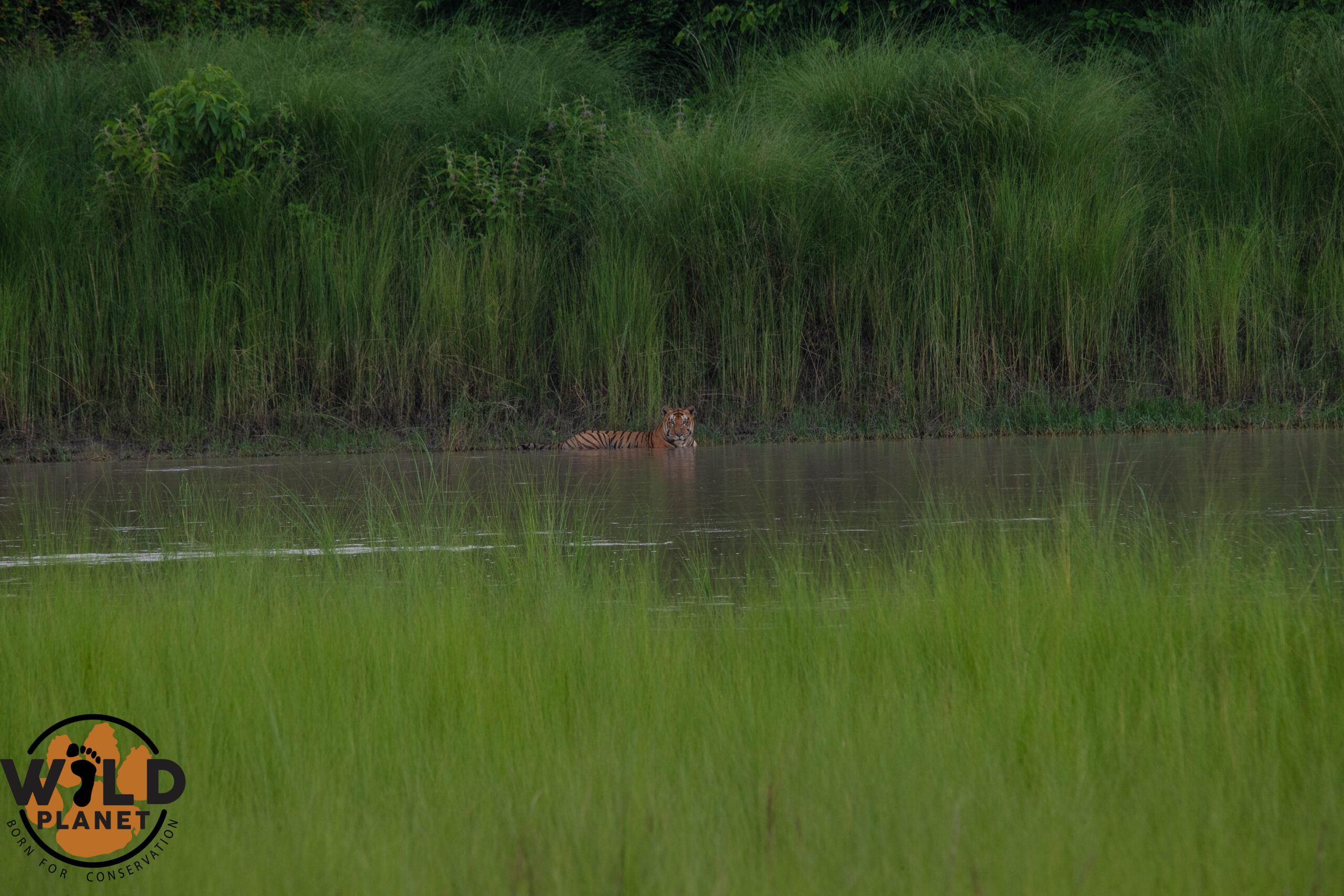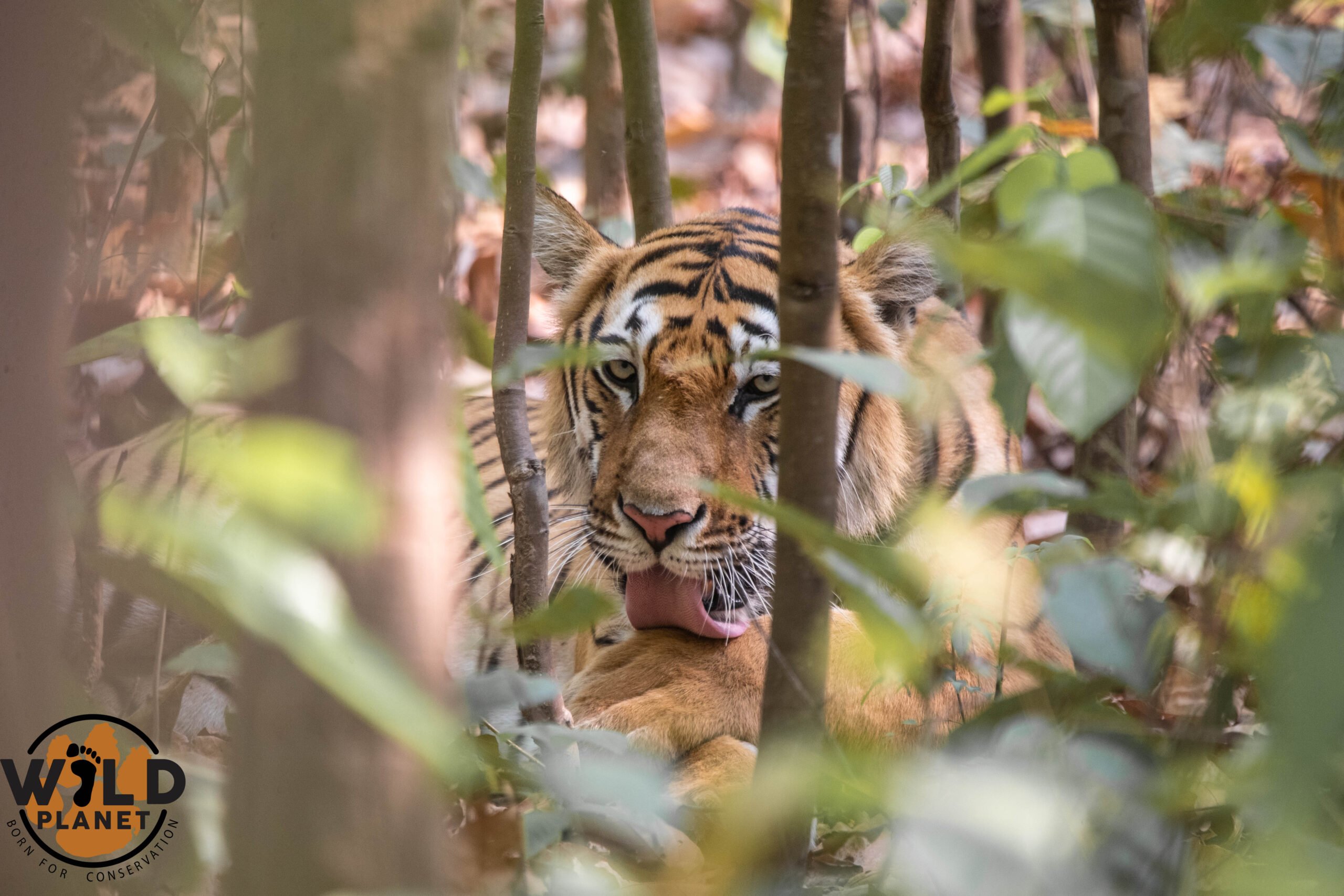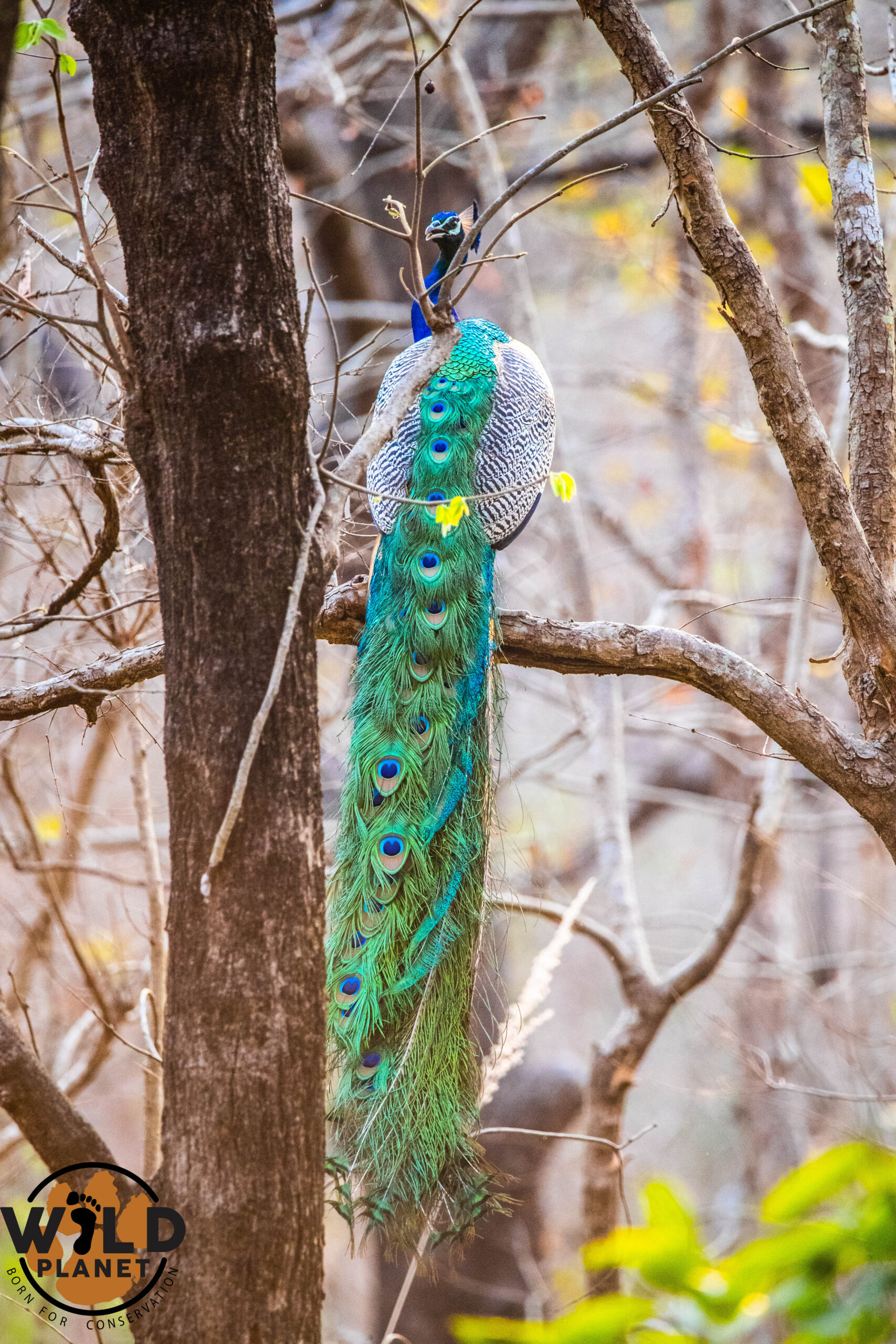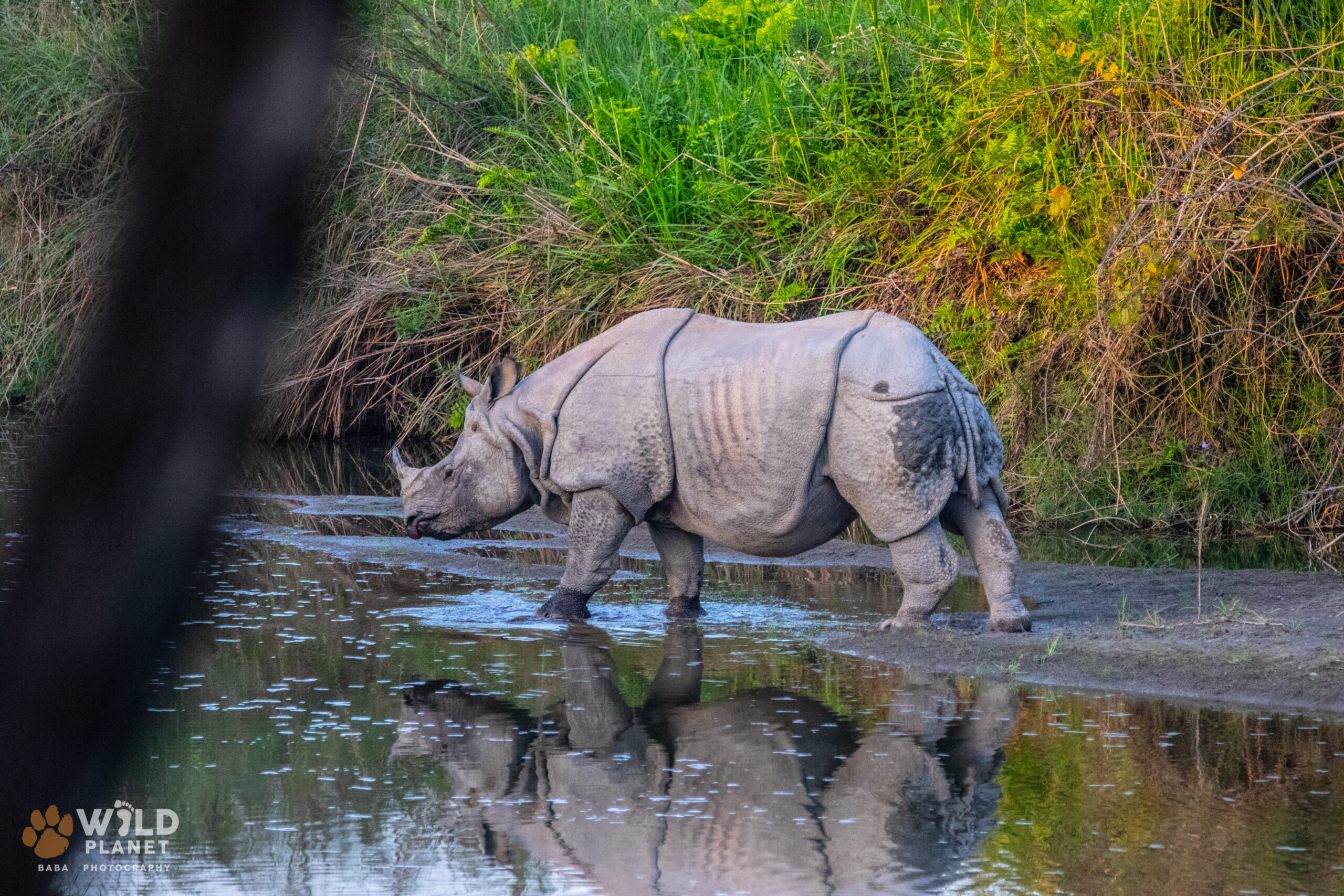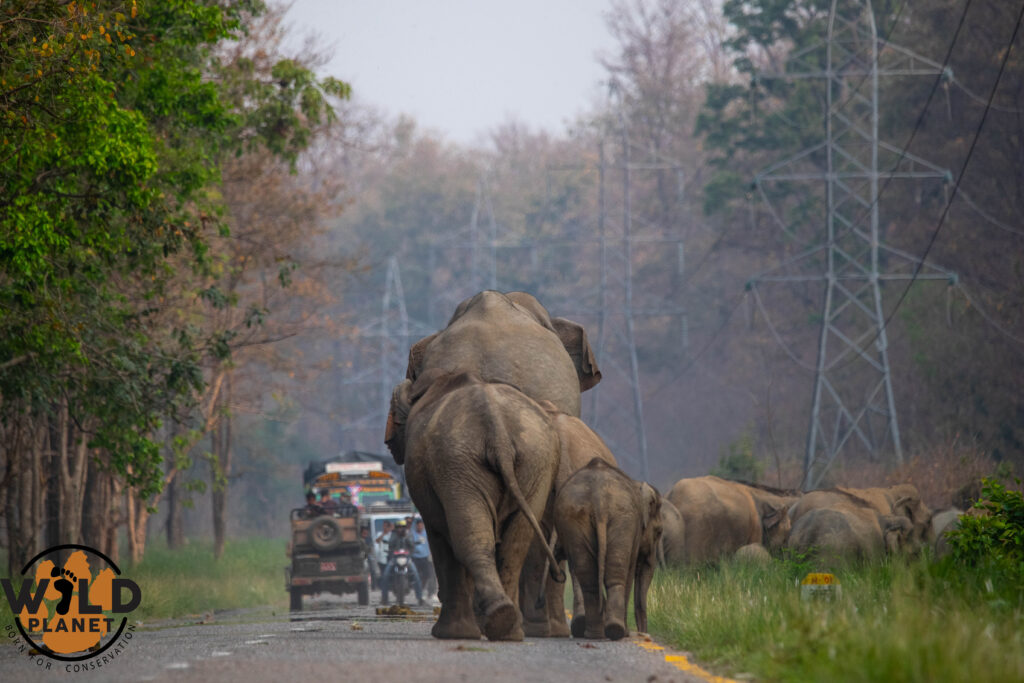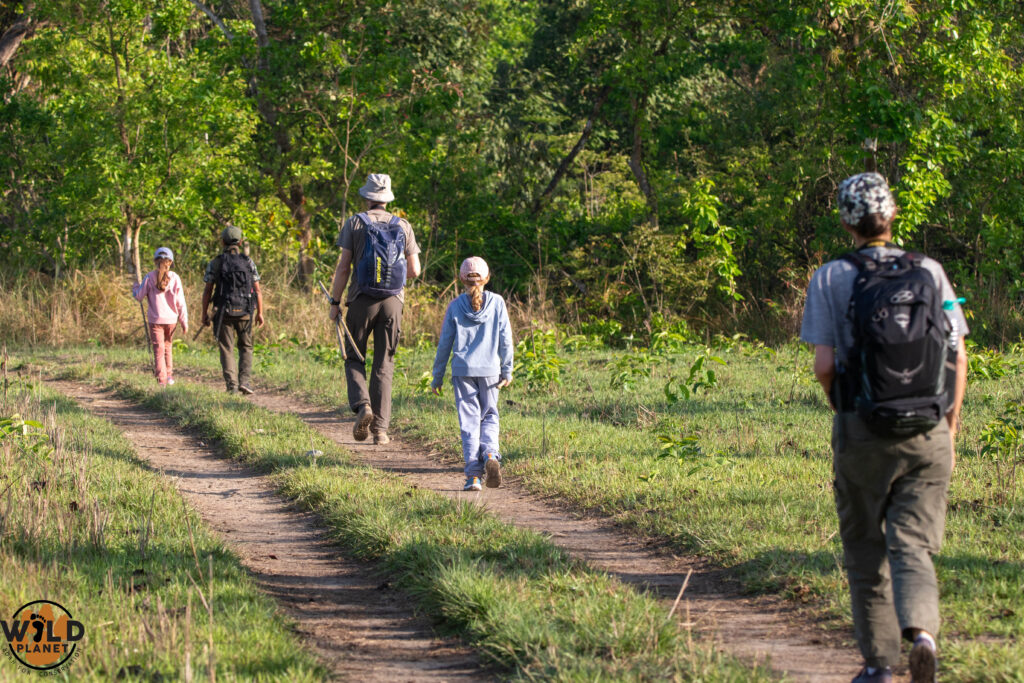
In the silence of a sunlit afternoon, as I walked along the western edge of Bardia National Park, an unusual voice pierced the air. It wasn’t a human voice—there was something primal, yet sorrowful about it, carrying layers of anguish and unspoken stories. “Hello! Hello!” the voice echoed. Startled, I turned, looking for the source, but there was no one in sight. My steps faltered, doubt crept in, but I pressed forward.
Then, as if the earth itself trembled with emotion, a thunderous call rang out again: “Oye! Oye!” I froze. My eyes darted toward a green, iron-barred cage, standing incongruously amidst the natural beauty of the jungle. There, a tiger—a magnificent, yet weary creature—was calling to me. His amber eyes, once fierce and full of wild spirit, now glistened with a yearning I could not ignore. He waved a paw through the bars, beckoning me closer, as if summoning me into his world of pain.
My heart pounded as I hesitated, torn between fear and compassion. His gaze wasn’t one of hostility—it was pleading, full of unshed tears. Slowly, I approached the cage. His every move seemed to echo with a tragic story, the kind you hear in whispers but feel in your bones.
“Why are you afraid?” the tiger asked, his deep voice carrying a surprising calmness. “You walk fearlessly in the jungle, yet you tremble before me now? I am locked behind these bars, a prisoner of your humanity.”
The weight of his words left me speechless. What could I say? My voice stuck in my throat as guilt wrapped its cold fingers around me.
“You’re surprised, aren’t you?” he continued. “Surprised that a tiger speaks? Don’t be. Words are my last refuge, my only weapon in this endless imprisonment. I’m no longer roaring—I’m pleading, because roaring has brought me nothing but these chains.”
The tiger’s voice grew heavier, a blend of pain and simmering anger. “How many more years will I stay locked in this cage? What crime did I commit that you’ve sentenced me to a lifetime behind bars? When humans kill their own, you call it murder and offer a mere twenty years of imprisonment. But for me, living free in my jungle was my only crime. And now I’m condemned to this—this hell—for life. Is this the justice you pride yourselves on?”
I wanted to speak, to say something, but his questions were sharp, like blades cutting through my soul. My silence only emboldened him. “I once roamed the forests of Bardia,” he said, his voice softening, as if lost in memory. “The wind carried the scent of blooming flowers. The rivers sang songs that I could understand. My paws kissed the earth with every step, free and unshackled. I had friends—deer, langurs, even the trees. We shared a world untouched by your cruelty.”
A tear rolled down his face. “But now…now I live in this cage. My world is a patch of concrete. The songs of the river have been replaced by the metallic clang of these bars. The wind that once caressed my fur now carries the scent of my captivity. My roar, once a symphony of freedom, now echoes uselessly within these walls.”
I couldn’t stop the tears streaming down my own face. His voice faltered, heavy with despair. “You humans speak of conservation, but what is this if not a mockery of life itself? You say you protect me, yet you rob me of the very essence of my existence. Do you even know what it feels like to be trapped, to watch the sky but never touch it? To dream of running but wake up to chains?”
His words were a storm, shaking me to my core. Then, his voice softened, almost like a whisper. “I am tired. Tired of being a prisoner. Tired of being a spectacle for your amusement. I don’t want to die here, surrounded by nothing but steel and pity. I want to return to the jungle, to my home. I want to run under the open sky, to feel the earth beneath my paws. I want to see my friends again, to live—not just exist.”
The tiger paused, his eyes locking with mine, desperate and hopeful. “Will you help me? Will you fight for my freedom? Or will you, like the rest, turn away, leaving me to rot in this cage?”
I opened my mouth, but no words came out. I wanted to promise him the world, but all I had was silence. My helplessness felt like betrayal. The tiger sighed, retreating into the shadows of his cage. “You’re just like the others,” he murmured. “Full of pity, but empty of action.”
As he climbed back up to his corner, I collapsed to the ground, overwhelmed by the weight of his words. His voice echoed in my mind, relentless and haunting. The world had wronged him, and I had become a silent witness to his suffering.
That night, I couldn’t sleep. His plea lingered in my thoughts, a constant reminder of the cruelty we inflict in the name of conservation. The tiger wasn’t just asking for freedom—he was asking for justice, for a chance to live a life he never deserved to lose.
Will we answer his call, or will we continue to cage not just his body, but his spirit? The tiger’s cry for freedom is not just his—it is a question for all of us: How long will we let our selfishness outweigh the right of another being to simply live?
